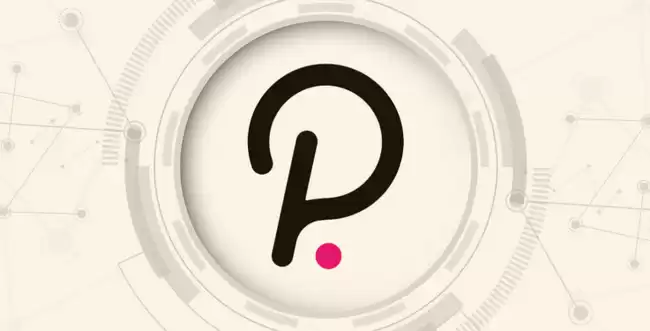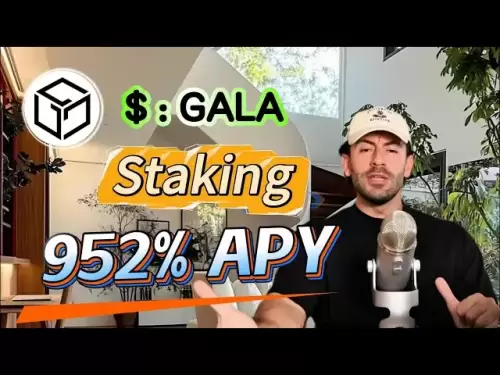-
 Bitcoin
Bitcoin $114500
-0.31% -
 Ethereum
Ethereum $3648
1.11% -
 XRP
XRP $3.033
-0.27% -
 Tether USDt
Tether USDt $0.9999
-0.01% -
 BNB
BNB $758.5
-0.32% -
 Solana
Solana $167.5
1.48% -
 USDC
USDC $0.9998
-0.02% -
 TRON
TRON $0.3331
0.74% -
 Dogecoin
Dogecoin $0.2039
0.25% -
 Cardano
Cardano $0.7419
-0.46% -
 Hyperliquid
Hyperliquid $39.21
2.66% -
 Stellar
Stellar $0.4049
-1.95% -
 Sui
Sui $3.483
-0.56% -
 Bitcoin Cash
Bitcoin Cash $570.8
2.89% -
 Chainlink
Chainlink $16.67
-0.57% -
 Hedera
Hedera $0.2470
-1.57% -
 Ethena USDe
Ethena USDe $1.001
0.00% -
 Avalanche
Avalanche $22.36
1.52% -
 Litecoin
Litecoin $123.4
4.35% -
 UNUS SED LEO
UNUS SED LEO $8.989
0.09% -
 Toncoin
Toncoin $3.324
-2.40% -
 Shiba Inu
Shiba Inu $0.00001219
-1.30% -
 Uniswap
Uniswap $9.811
2.54% -
 Polkadot
Polkadot $3.662
-0.07% -
 Monero
Monero $295.5
-3.85% -
 Dai
Dai $1.000
0.01% -
 Bitget Token
Bitget Token $4.345
0.24% -
 Cronos
Cronos $0.1380
0.95% -
 Pepe
Pepe $0.00001044
-1.14% -
 Ethena
Ethena $0.5981
-4.24%
What kind of coin is DOT? A comprehensive introduction to DOT coin projects in one article
Polkadot's native token, DOT, serves multiple use cases in the ecosystem, including staking, governance, transaction fees, and contributing to the overall functioning of the network.
Oct 05, 2024 at 10:24 pm

What is DOT?
DOT is the native token of the Polkadot blockchain, a next-generation blockchain protocol that aims to provide a scalable, interoperable, and secure platform for the deployment of decentralized applications (dApps). Polkadot was developed by the Web3 Foundation, a Swiss non-profit organization founded by Gavin Wood, one of the co-founders of Ethereum.
DOT Coin Project Overview
The DOT coin project has the following key objectives:
- Create a scalable blockchain: Polkadot's unique design allows it to support multiple parallel blockchains, known as parachains, which can process transactions independently from each other. This significantly increases the scalability of the network.
- Enable interoperability: Polkadot provides a bridge between different blockchains, allowing for the seamless transfer of assets and data across different networks. This allows for the creation of cross-chain applications that can leverage the capabilities of multiple blockchains.
- Enhance security: Polkadot's Relay Chain, which connects the parachains, is responsible for securing the overall network. It uses a consensus mechanism called Nominated Proof-of-Stake (NPoS), which provides a high level of security while maintaining decentralization.
DOT Coin Use Cases
DOT has several use cases within the Polkadot ecosystem:
- Staking: DOT holders can stake their tokens on validators to help secure the network and earn rewards.
- Governance: DOT holders can participate in the governance of the Polkadot network by voting on proposals that affect the development and operation of the blockchain.
- Transaction fees: DOT is used to pay for transaction fees on the Polkadot network.
DOT Coin Distribution
The total supply of DOT is 1,000,000,000 tokens. The distribution of DOT is as follows:
- Sale of 50% of the tokens: 500,000,000 DOT were sold to investors through a public auction in 2017 and 2019.
- Grant allocation: 25% of the tokens were allocated to the Web3 Foundation to fund the development and research of the Polkadot project.
- Team allocation: 15% of the tokens were allocated to the development team of Parity Technologies, the company behind the development of Polkadot.
- Other allocations: The remaining 10% of the tokens were distributed to advisors, early contributors, and for ecosystem development.
Conclusion
DOT is a key component of the Polkadot blockchain ecosystem, providing scalability, interoperability, and security for the deployment of dApps. The project has a strong team and a well-defined roadmap, making it a promising investment opportunity in the cryptocurrency market.
Disclaimer:info@kdj.com
The information provided is not trading advice. kdj.com does not assume any responsibility for any investments made based on the information provided in this article. Cryptocurrencies are highly volatile and it is highly recommended that you invest with caution after thorough research!
If you believe that the content used on this website infringes your copyright, please contact us immediately (info@kdj.com) and we will delete it promptly.
- Altcoin Alert: Is Punisher Coin the Presale to Pounce On?
- 2025-08-06 06:50:11
- XRP Price, Bitwise, and the 2030 Forecast: Will XRP Hit the Big Time?
- 2025-08-06 06:50:11
- Ruvi AI: The AI Token Primed for CMC Listing and Explosive Growth
- 2025-08-06 06:30:13
- Michigan Pension, Bitcoin ETF, and Institutional Investment: A New Era?
- 2025-08-06 07:10:11
- Verb Technology's Bold Move: Acquisition, Rebranding, and a $558M Bet on Toncoin
- 2025-08-06 07:30:12
- Sushi's Sizzling Summer: AMA on August 6th & Market Moves!
- 2025-08-06 06:30:13
Related knowledge

What is Ethereum’s Slashing mechanism and how to punish malicious behavior?
Feb 20,2025 at 03:08am
Key PointsOverview of slashingDifferent types of slashing in EthereumIncentives and consequences of slashingIdentifying and reporting slashed validato...

What is the verifier node of Ethereum and how to become a verifier?
Feb 19,2025 at 06:00pm
The Verifier Node of Ethereum: A Comprehensive GuideKey Points:What is a Verifier Node?How to Become a Verifier NodeResponsibilities and Rewards of a ...

What is Ethereum’s staking, and how to participate and earn money?
Feb 19,2025 at 04:37pm
Key Points:Understanding Ethereum's Staking MechanismSteps to Participate in StakingBenefits and Rewards of StakingSecurity and Risk ConsiderationsTec...

What is Ethereum’s DAO (Decentralized Autonomous Organization) and how does it work?
Feb 20,2025 at 03:12am
Key PointsDefinition and Structure of a DAOGovernance and Decision-Making in DAOsBenefits and Use Cases of DAOsChallenges and Limitations of DAOsWhat ...

What is Ethereum's multi-signature wallet and how to improve security?
Feb 20,2025 at 02:18pm
Key Points:Understanding the Concept of a Multi-Signature WalletBenefits and Drawbacks of Multisig WalletsRequirements for Setting Up a Multisig Walle...

What is Ethereum's oracle and how to provide data for smart contracts?
Feb 21,2025 at 01:30am
Key Points:Understanding the concept of oracles in EthereumExploring different types of oraclesDetailed guide on how to provide data for smart contrac...

What is Ethereum’s Slashing mechanism and how to punish malicious behavior?
Feb 20,2025 at 03:08am
Key PointsOverview of slashingDifferent types of slashing in EthereumIncentives and consequences of slashingIdentifying and reporting slashed validato...

What is the verifier node of Ethereum and how to become a verifier?
Feb 19,2025 at 06:00pm
The Verifier Node of Ethereum: A Comprehensive GuideKey Points:What is a Verifier Node?How to Become a Verifier NodeResponsibilities and Rewards of a ...

What is Ethereum’s staking, and how to participate and earn money?
Feb 19,2025 at 04:37pm
Key Points:Understanding Ethereum's Staking MechanismSteps to Participate in StakingBenefits and Rewards of StakingSecurity and Risk ConsiderationsTec...

What is Ethereum’s DAO (Decentralized Autonomous Organization) and how does it work?
Feb 20,2025 at 03:12am
Key PointsDefinition and Structure of a DAOGovernance and Decision-Making in DAOsBenefits and Use Cases of DAOsChallenges and Limitations of DAOsWhat ...

What is Ethereum's multi-signature wallet and how to improve security?
Feb 20,2025 at 02:18pm
Key Points:Understanding the Concept of a Multi-Signature WalletBenefits and Drawbacks of Multisig WalletsRequirements for Setting Up a Multisig Walle...

What is Ethereum's oracle and how to provide data for smart contracts?
Feb 21,2025 at 01:30am
Key Points:Understanding the concept of oracles in EthereumExploring different types of oraclesDetailed guide on how to provide data for smart contrac...
See all articles

























































































